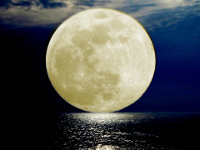Paid Services
Purnima 2017 Dates
 According to our Scriptures, Purnima is known to be the most auspicious day among Hindus. It is held in every month as per the Gregorian calendar. It also marks the division between Shukla and Krishna Paksha. Observing fasts on these days is meant to be very fruitful. Having a holy bath is also very beneficial. In this article see Purnima 2017 dates for the year 2017. Read on to know more…
According to our Scriptures, Purnima is known to be the most auspicious day among Hindus. It is held in every month as per the Gregorian calendar. It also marks the division between Shukla and Krishna Paksha. Observing fasts on these days is meant to be very fruitful. Having a holy bath is also very beneficial. In this article see Purnima 2017 dates for the year 2017. Read on to know more…
Importance Of Purnima
Purnima is the day of welfare. Shukla Paksha ends on this Tithi and Krishna Paksha begins. Like every year, 2017 will also witness 12 Purnimas. As per beliefs, these 12 Purnimas mark twelve good occasions.Every Purnima (Full Moon) marks the arrival of one or the other festival. It is believed that people born on the day of Purnima are intelligent and wealthy.
Purnima : Purnima Yoga
On the day of Purnima, Jupiter and Moon share the same constellation and for this reason; thereby, increasing the auspiciousness of this day. According to beliefs, people born on Poornima Tithi should worship Chandra Deva, as he is the lord of this day. Below is the chart of fasting days of Purnima 2017.
Purnima 2017 Dates Table
| Purnima Dates In 2017 | Day | Purnima |
|---|---|---|
| January 12, 2017 | Thursday | Paush Purnima |
| February 10, 2017 | Friday | Magha Purnima |
| March 12, 2017 | Sunday | Phalgun Purnima |
| April 11, 2017 | Tuesday | Chaitra Purnima |
| May 10, 2017 | Wednesday | Vaishakh Purnima |
| June 9, 2017 | Friday | Jyestha Purnima |
| July 9, 2017 | Sunday | Ashadha Purnima |
| August 7, 2017 | Monday | Shravan Purnima |
| September 6, 2017 | Wednesday | Bhadrapada Purnima |
| October 5, 2017 | Thursday | Ashwin Purnima |
| November 4, 2017 | Saturday | Kartik Purnima |
| December 3, 2017 | Sunday | Margashirsha Purnima |
Most Widely Followed Purnima
Every month has a full Moon Day and every Purnima Tithi has its own importance. Let's take a look at the list of the most celebrated Poornima:
Paush Purnima : Also known as Shakambari Poornima, this day follows the rituals of taking dip in holy water body.
Magha Purnima : On this day, Moon coincides with the Nakshatra (constellation) Magha. It is believed that worshiping Maa Parvati and Lord Brihaspati on Magha Purnima, yields rewarding results.
Phalgun Purnima : Falling in the month of Phalgun, Phalgun Poornima is dedicated to Goddess Lakshmi and Lord Krishna .
Chaitra Purnima : Chaitra Purnima is devoted to Goddess Chitra Gupta. It is said that taking dip in holy river on Chaitra Purnima is highly fruitful.
Vaishakh Purnima : Vaishakh Purnima is also celebrated as Buddha Purnima. It is believed that on this day, Buddha gained knowledge and wisdom. The real celebration is observed at Bodh Gaya.
Jyestha Purnima : This Purnima is popularly known as Jagannath Purnima. The real celebrations of Jyestha Purnima are seen at the famous Jagannath Temple (Puri).
Ashadha Purnima : Ashadha Purnima is also known as Guru Purnima. It is celebrated in commemoration of Sage Ved Vyas. On this day, spiritual Gurus are worshiped by their followers.
Shravan Purnima : Shravan Purnima has significant meaning for the Hindu people. As per the beliefs, Shravan Poornima is counted among the holiest months mentioned in the Hindu calendar.
Bhadrapada Purnima : On this Purnima, Lord Satyanarayana is worshiped.
Ashwin Purnima : Also known as Kojagari Purnima, Ashwin Purnima is the harvest festival celebrated in the month of Ashwin. It is said that on this day, the Moon and the earth gets very close to each other. Goddess Lakshmi is the deity of this Purnima.
Kartik Purnima : Our legends say that on Kartik Purnima, Lord Shiva defeated the devil, Tripura.
Margashirsha Purnima : Margashirsha Purnima teaches us that we should help others without any selfish aim. This Poornima or Full Moon Day is also known by the name ‘Battesi Poornima’.
Purnima : Fasting During Purnima
People of Tamil Nadu, Karnataka and Andhra Pradesh conduct Satyanarayan Puja on this day to honor the deity. To please the lord, some devotees observe Purnima Vrat. Purnima fast begins from sunrise and lasts till the Moon is witnessed. Poornima fast can be observed in two ways:
Partial fast : The Purnima Vrat in which only fruits are consumed is known as Phalahari Vrat or partial fast. During this Purnima Vrat, devotees can consume milk, nuts, fruits and Sabudana (Sago).
Complete fast : The Purnima fast in which devotees refrain from taking even a single drop of water, is known as Nirjala fast or complete fast.
While observing Purnima Vrat, you should also avoid intake of rice, pulses, grains, and cereals.
Purnima : Tradition Of Preparing Kheer
Purnima is a very special day and the Moon of Purnima is considered to be calming, cooling and life-giving. According to beliefs, preparing Kheer (sweet rice porridge) on this day is very fruitful. After preparing it, it is kept under the Moonlight. Before next morning’s sunrise, it is consumed as Prasadam (sacred food). It is said that Moon rays or Moon light adds "Amrit" (immortal nectar) in it. Meditating on the Full Moon Day under the cool rays of moon is believed to be very fortunate.
Purnima : Scientific Beliefs About Purnima
According to the scientific beliefs, fasting or eating light food on the day of Purnima reduces the acidic content of the body. It controls the metabolic rate and regulates endurance, which helps in balancing the body and mind. Worshiping on Poornima subdues the emotions and helps in controlling the temper.
This was all about Purnima fast and dates of Purnima in 2017. On this pious day, gain good Karmas and let all the positivity enter your life. Hopefully, this article on Purnima 2017 will help you in the best way.
- 2025 Horoscope
- 2025 राशिफल
- 2025 Chinese Horoscope
- 2025 चीनी राशिफल
- 2025 Muhurat
- 2025 मुहूर्त
- 2025 राशि भविष्य
- 2025 முகூர்த்தம்
- 2025 মুহূর্ত
- 2025 ముహూర్తం
- 2025 મુર્હત
- 2025 മുഹൂർത്തം
- 2025 ಮುಹೂರ್ತ
- 2025 মুহুৰ্ত
- 2025 ମୁହୂର୍ତ - ତିଥି ଓ ସମୟ
- 2025 ਮਹੂਰਤ
- 2025 ରାଶିଫଳ
- 2025 ਰਾਸ਼ੀਫਲ
- 2025 ರಾಶಿಭವಿಷ್ಯ
- 2025 രാശിഫലം
- 2025 રાશિફળ
- 2025 রাশিফল
- 2025 ராசி பலன்
- 2025 రాశిఫలాలు
 Best quality gemstones with assurance of AstroCAMP.com More
Best quality gemstones with assurance of AstroCAMP.com More
 Take advantage of Yantra with assurance of AstroCAMP.com More
Take advantage of Yantra with assurance of AstroCAMP.com More
 Yantra to pacify planets and have a happy life .. get from AstroCAMP.com More
Yantra to pacify planets and have a happy life .. get from AstroCAMP.com More
 Best quality Rudraksh with assurance of AstroCAMP.com More
Best quality Rudraksh with assurance of AstroCAMP.com More
Get your personalised horoscope based on your sign.



















